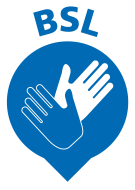A stroke is a serious life-threatening medical emergency that needs urgent treatment
A stroke happens when the blood supply to part of the brain is cut off, starving it of oxygen. This damages the brain and stops it from working properly, which affects how the body works.
The effects of a stroke vary and depend on where is takes place in the brain and how big the damaged area is.
Who’s at risk?
Strokes can happen to anyone, of any age, at any time.
What to look for
Timing is crucial when someone has a stroke. The sooner they receive treatment, the less damage is likely to be done. So, it’s important that you can quickly recognise the signs of a stroke in yourself or someone else.
An easy way to remember the signs and how to act is with the word FAST:
- Face - has their face fallen on one side? Can they smile?
- Arms – can they raise both arms and keep them there?
- Speech – is their speech slurred?
- Time – call 999 immediately if you see any single one of these signs.
Other symptoms of stroke
The FAST test will help you spot the most common signs of a stroke, but there are other symptoms that can occur. These include:
- Sudden weakness or numbness on one side of the body
- Difficulty finding words or speaking clear sentences
- Sudden blurred vision or loss of sight in one or both eyes
- Sudden memory loss or confusion
- Dizziness or a sudden fall
- A sudden, severe headache.
What to do
If you think that you or someone else is having a stroke, call 999 immediately and ask for an ambulance.
Acting fast will give the person having the stroke the best chance of survival and recovery.

